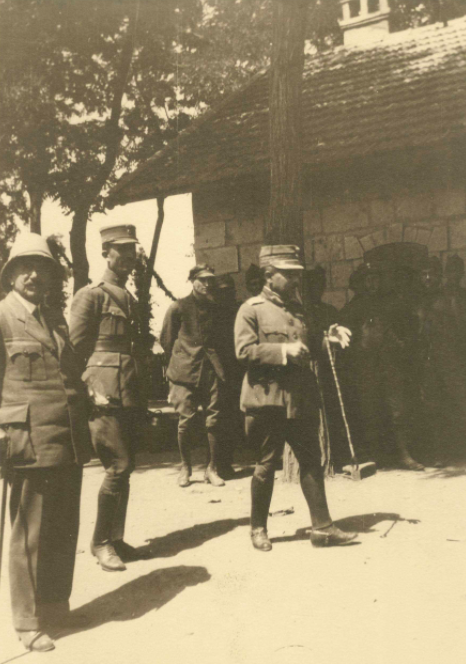In a remarkably bold, courageous, and potentially dangerous move, Gilbert interviewed the two survivors of the kangaroo court who had been sentenced to life imprisonment; the six others, mostly politicians, had been summarily executed immediately after sentencing in November 1922. Gilbert visited Admiral Michael Goudas in prison and General Xenophon Stratigos, who had only been placed under house arrest because of his health. Gilbert was accompanied by Anna Kozadinou, the 28-year-old royalist whose letters Gilbert had destroyed since she was a ‘suspect person.’ It seems unlikely that the military authorities with their policy of censorship and monitoring of telegraphic communications would approve of a foreign journalist providing publicity to their enemies. Nonetheless, whatever pretext Gilbert used to gain access to the two prisoners and whatever information and opinion Greek military intelligence had on Gilbert are not known. Anna and her letters had evidently been under watch for several weeks. Gilbert made use of his interviews in his subsequent newspaper articles, in which he does not name his sources, but Anna’s motivation in accompanying Gilbert can only be surmised; she clearly had strongly held beliefs which she was prepared to act on at considerable personal risk.
“On Monday [21 May] I went with the [Kozadinou] to see Goudas at the prison. He has been rather bad, had a heart attack some time ago when I was at Lemnos, but is better now. He is writing the history of the trial. The [Kozadinou] tells me poor Mme Baltazzis [widow of the executed Foreign Minister George Baltazzis] is very bad, and has grown terribly thin. … I have also seen Stratigos, the other man who was condemned at the trial but who is allowed to live at home as he is crippled with arthritis. He is, I find, one of the more intelligent and less violent royalists. Got a lot of very sound common sense.”
While her husband was alive and traveling as Foreign Minister with Prime Minister Gounaris trying in vain to solicit funds from European governments, Mme Chariclee Baltazzi had been described as enormous. That she had “grown terribly thin” after her husband’s execution is very poignant.
An article appeared in the Morning Post dated August 1923 entitled “Mr Lloyd George Inconsistencies – Greek General on Policy of M. Venizelos”
“The text of Mr. Lloyd George’s speeches and articles on the treaty of Lausanne has only now reached Athens. Greek politicians who still believe that an English ex-Premier would care something for consistency, compare them with wonder with his speech of August 4 just a year ago. A distinguished Greek General said to me:
‘It is ridiculous to say that as long as M. Venizelos was in power our army inflicted defeat after defeat the armies of Angora, for the simple reason that it was never allowed to fight them – and, indeed, the Kemalist army was not then at its full efficiency. When General [Leonidas] Paraskevopoulos attempted to crush the irregular bands which were to become the Angora army, M. Venezelos immediately ordered him to withdraw within the limits of the Treaty of Sevres, and it was this defensive policy of M. Venezelos, either agreed to or imposed by Mr. Lloyd George, which gave Kemal a chance to organise his army. The only military operation in Anatolia under M. Venezelos was the ‘glorious’ capture of Smyrna. On the other hand, the offensive against Kemal was launched with the full approval and support (of course only verbal) of Mr. Lloyd George, who in March, 1921, agreed with M. Gounaris that King Constantine should go to the front, since he had the greatest faith in his popularity and military ability.’”

Undated but likely 1921 photograph purchased recently by myself showing Gen. Xenophon Stratigos at Dumlupinar in Anatolia. In September 1921, Stratigos retired from the Greek army to serve as Transport Minister in Gounaris’ cabinet. After being freed from his sentence of life imprisonment, he moved to Switzerland where he died in 1927 after publishing Greece in Asia Minor in 1925.

